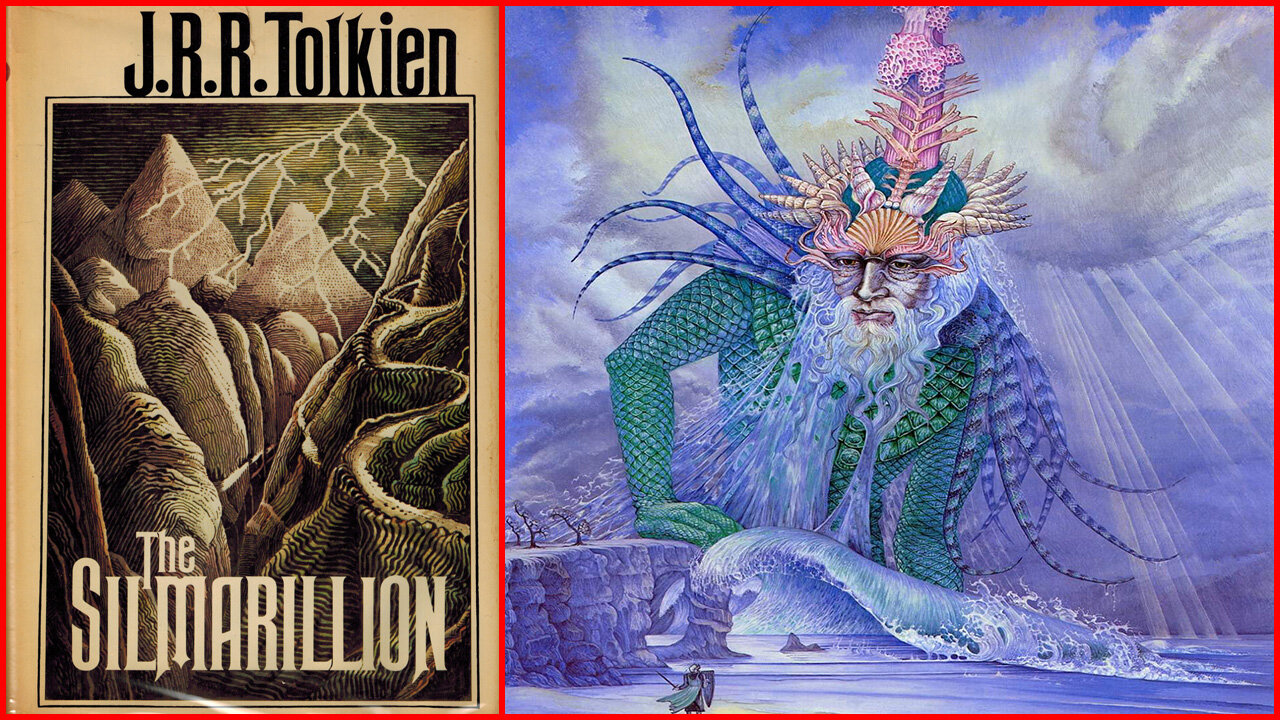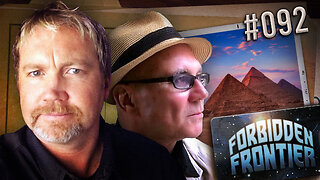Premium Only Content

'The Silmarillion' (1957) by J R R Tolkien
'The Silmarillion' is a collection of mythopoeic stories that serve as the prehistory of Middle-earth, chronicling its creation, the rise and fall of its great civilizations, and the events leading up to The Lord of the Rings. Compiled and edited by Christopher Tolkien after J R R Tolkien's death, it is a sweeping, epic narrative filled with themes of creation, corruption, love, loss, and redemption.
Structure and Key Sections:
Ainulindalë (The Music of the Ainur): The story begins with Eru Ilúvatar, the supreme deity, who creates the Ainur, angelic beings. Through their divine music, Ilúvatar creates the universe, Eä, and its world, Arda. However, discord arises when Melkor, the most powerful of the Ainur, introduces his own themes, symbolizing the first rebellion against Ilúvatar.
Valaquenta (The Account of the Valar and Maiar):
This section details the Valar (the gods of Arda) and the Maiar (lesser divine spirits). Melkor, later known as Morgoth, becomes the dark enemy of the world, while the Valar strive to shape and protect Arda.
Quenta Silmarillion (The History of the Silmarils):
The central portion of the book narrates the tragic saga of the Silmarils, three brilliant jewels crafted by Fëanor, the greatest of the Elves. The Silmarils contain the light of the Two Trees of Valinor, sacred creations of the Valar.
The First Age: Morgoth steals the Silmarils and flees to Middle-earth, fortifying his stronghold, Angband.
Fëanor and his kin swear a terrible oath to recover the Silmarils, leading to the Kinslaying, where Elves kill their own kind. This act curses Fëanor’s house.
The Elves, Dwarves, and Men unite in a desperate struggle against Morgoth, leading to epic battles like the Dagor Bragollach (Battle of Sudden Flame) and the Nirnaeth Arnoediad (Battle of Unnumbered Tears).
Tragic Tales:
Beren and Lúthien: A mortal man and an Elven maiden fall in love and succeed in reclaiming a Silmaril from Morgoth’s crown, a feat of heroism that inspires future generations.
The Children of Húrin: A tale of doom and sorrow as Húrin's children, Túrin and Niënor, are cursed by Morgoth, leading to tragedy.
The Fall of Gondolin: The hidden Elven city of Gondolin is betrayed and destroyed by Morgoth’s forces.
Eventually, the Valar intervene, and Morgoth is defeated in the War of Wrath, ending the First Age. However, the Silmarils are lost—one in the sky, one in the sea, and one in the earth.
Akallabêth (The Downfall of Númenor):
In the Second Age, the island kingdom of Númenor rises, a gift to Men for aiding the Elves. However, their pride grows, and under the influence of Sauron, Morgoth's lieutenant, they defy the Valar by attempting to seize immortality. Númenor is destroyed in a cataclysm, but survivors, including Elendil, flee to Middle-earth, founding the kingdoms of Gondor and Arnor.
Of the Rings of Power and the Third Age:
This final section recounts the forging of the Rings of Power by Elven smiths under Sauron's guidance. Sauron creates the One Ring to dominate the others, leading to centuries of conflict. The Elves, Men, and Dwarves resist Sauron, setting the stage for the events of The Hobbit and The Lord of the Rings.
Themes and Significance
Creation and Corruption: The narrative explores the beauty of creation and the devastating effects of pride, greed, and rebellion.
Fate and Free Will: Characters face the tension between destiny and choice, especially in their resistance to Morgoth and Sauron.
Light and Darkness: Light symbolizes hope and purity, while darkness represents Morgoth’s destructive influence.
Sacrifice and Redemption: Many stories highlight the cost of heroism and the possibility of redemption through love and courage.
The Silmarillion is a richly detailed work that lays the mythological and historical foundations for Tolkien’s Middle-earth, offering profound insights into his legendary world.
-
 6:51:13
6:51:13
Akademiks
8 hours agoDay 2/30. Nipsey Hussle Brother Standing on Bizniz? Offset and Cardi Calls it Quits. 50 v Jim Jones?
95.4K5 -
 5:24:38
5:24:38
EricJohnPizzaArtist
7 hours agoAwesome Sauce PIZZA ART LIVE Ep. #37: Chaos in Roswell!
45.5K3 -
 2:11:29
2:11:29
vivafrei
18 hours agoEp. 253: Zelensky Dress-Down and Geopolitical Fallout! D.C. Court Rules AGAINST Trump Firing & MORE!
188K293 -
 2:13:14
2:13:14
Nerdrotic
10 hours ago $9.86 earnedMegalithomania! with Hugh Newman and Andrew Collins | Forbidden Frontier #092
82.9K13 -
 38:41
38:41
Sarah Westall
12 hours agoHealth Freedom Under Attack, Dr Robert Young Found Guilty on Suspicious Victimless Crime, Matt Hazen
86K9 -
 LIVE
LIVE
Vigilant News Network
11 hours agoDataRepublican Exposes the Shadow Government’s Darkest Secrets - Exclusive Interview | Media Blackout
2,035 watching -
 31:39
31:39
Peter Santenello
1 year agoStories From Vegas' Golden Era 🇺🇸
82.9K25 -
 LIVE
LIVE
The Why Files
15 hours agoLIVE: The Why Files 24/7 Stream n' Chat
1,449 watching -
 55:15
55:15
Russell Brand
1 day agoThe Truth About Big Pharma & COVID with Dr. Aseem Malhotra
188K11 -
 1:19:48
1:19:48
The Rubin Report
15 hours agoWhat the Trump Administration Must Do Instead of Revenge | Peter Thiel
141K171